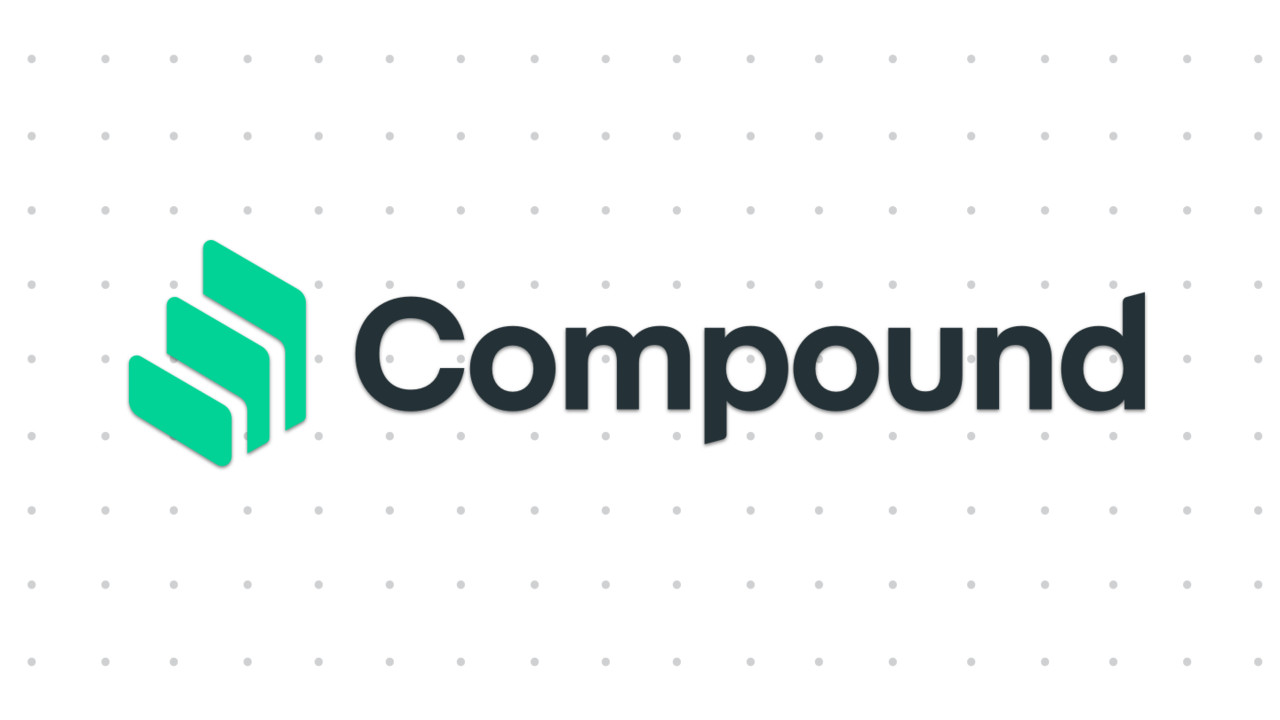
Compound Finance rocketed to preeminence recently as the new DeFi darling with its COMP governance token seeing massive gains. This spate of wild speculation has been accompanied not only by more traders piling on but also by funny memes and videos featuring Yield Farmers harvesting their lucrative crops.
If speculation continues at this pace, Compound could be poised to dethrone MakerDAO as the reigning king of DeFi. Maker and Compound are similar in that they both operate in the money market space. Unlike Maker, however, the Compound protocol supports multiple assets and users don’t have to borrow to lock them up.
Yield farming is all the rage right now, but before we get into that let’s take a deeper look at Compound itself.
What is Compound?
Compound is a decentralized protocol on the Ethereum blockchain that establishes money markets for the borrowing and lending of assets. These assets are popular cryptocurrencies such as ETH, DAI, and Tether.

Historically, Blockchain assets have been chewed up, or at least “chewed on,” by costs associated with on-exchange and off-exchange storage risks. With no earnings from interest rates to offset the costs, crypto storage has resulted in negative yields. Compound aims to fix this problem defined in their mission as: “The majority of cryptocurrencies sit idle on exchanges and in wallets, without yielding interest.”
To remedy this, Compound introduced its decentralized system to offer users a positive yield whilst storing assets. Remember the days when you could earn a decent interest rate on your fiat money market accounts? Compound is similar, unlike an exchange or peer-to-peer platform, however, borrowers and lenders don’t have to hook up to negotiate terms such as interest rates or maturity dates. Rather than exchanging assets with each other, they interact directly with the protocol.
Lenders provide liquidity and borrowers borrow from the market. Each party respectively earns or pays an algorithmically derived, floating interest rate that is based on the supply and demand for the particular, underlying asset (ETH for example). A user simply specifies the asset they desire and the transaction takes place instantly—“frictionless” as the community likes to call it. The assets supplied are always greater than the assets borrowed, and it’s this excess liquidity that allows users to quickly withdraw or borrow funds.
Also, there are no pre-defined durations where users have to wait (like a 90-day term) for a loan to mature. Users can withdraw their tokens at any time. And business is conducted on a transparent blockchain where a record of all transactions is available for public inspection.
Interest Rates Offered on Compound
Each money market has a floating interest rate that fluctuates in real-time based on the market forces of supply and demand for the underlying asset. Interest rates drop when liquidity is abundant and they increase as liquidity becomes scarce—for example, during periods of high demand for an asset. And again they fluctuate, so the user isn’t locked into one interest rate.
Balances in a money market earn interest based on the rate assigned to that particular asset and users can watch their balances accrue interest in real-time. Hodlers can hodl as long as they like and traders can withdraw or repay in periods as short as one block.
What are cTokens?
cTokens are Compound’s native tokens. When a user supplies assets to the Compound protocol, they receive cTokens which represent claims on the asset pool. They are similar to other Ethereum ERC 20 tokens and can be transferred, traded, programmed by developers, or redeemed at any given time. So, a user’s balance in a specific Compound market is represented in cTokens. A user can “mint” more cTokens by supplying more assets to the protocol or they can redeem cTokens for their underlying assets already deposited.
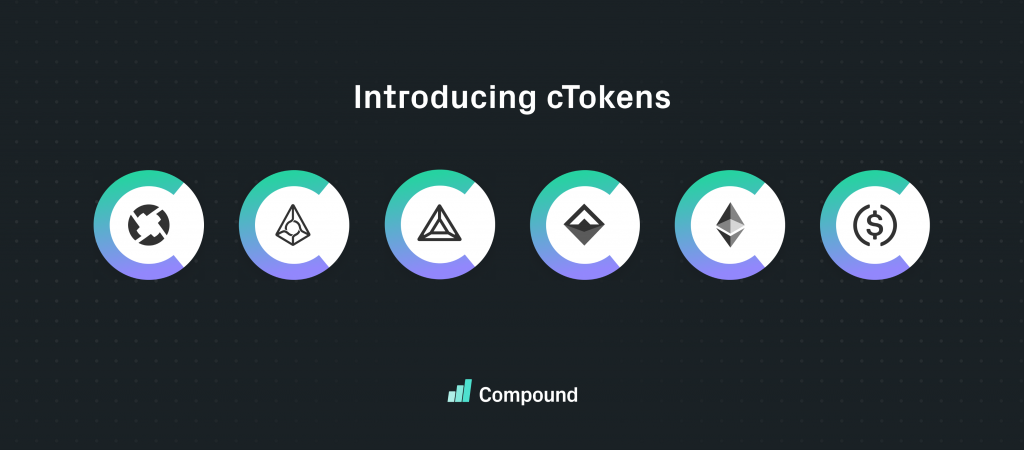
Each money market has its particular cToken that can increase in value as their specific market continues to accrue interest. This amount is based on the lending rate, which in turn is based on borrowing demand. So, one can earn interest simply by hodling. However, the number of cTokens in a user’s account won’t increase—it stays the same. Over time, each cToken can be exchanged for an ever-increasing amount of its underlying asset.
How To Lend or Borrow Assets on Compound
You can get Compound on Uniswap or even some centralized exchanges but most users get Compound by using the protocol itself through a web 3.0 wallet like Metamask. Your wallet will enable you to perform essential functions on the blockchain like authorizing transactions, viewing balances, as well as securing the private keys to your crypto kingdom.
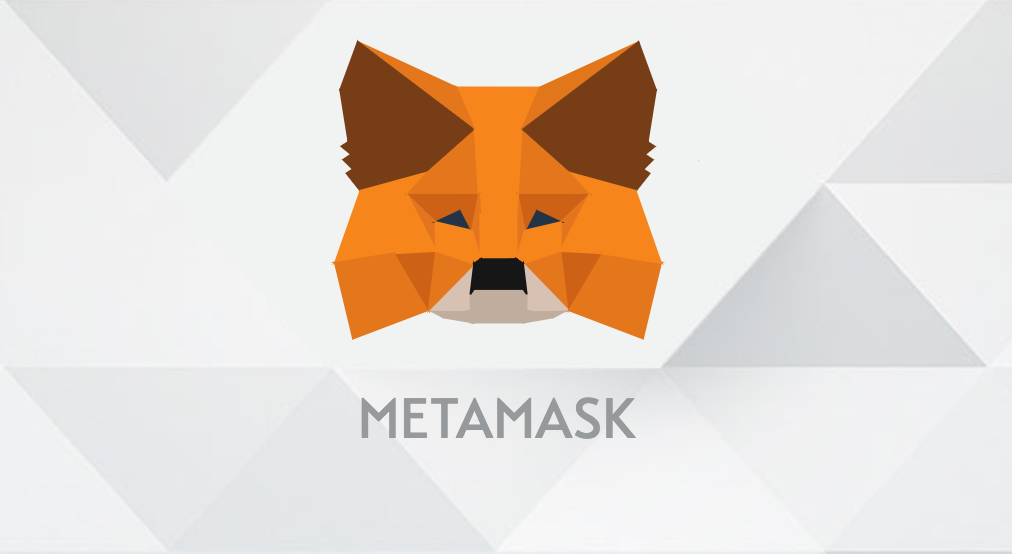
When you visit Compound’s interface, you will be instructed to connect your wallet. After connecting, you can select your preferred asset(s) in the Account Overview section—Supply markets are on the left, and Borrow markets are on the right. You must first specify the quantity, then enable the asset before you can use it. Your wallet will ask for confirmation and you’ll need to pay a small gas fee.
Once enabled, you can supply or borrow that asset. When lending, the assets are supplied to Compound directly from your wallet and you can immediately begin earning interest. If you get nervous, you can withdraw any or all of our balance back to your wallet at any time.
How to Borrow on Compound
When borrowing, you must first provide collateral. The protocol checks the collateral to determine how much you can borrow. To protect the protocol from default risk, users are not allowed to exceed their borrowing capacity. Thus, a user can’t take any action such as borrowing, transferring, or redeeming, that would raise the value of their borrowed assets above their capacity.
Some assets have more borrowing power than others which is represented by a unique Collateral Factor. For example, if your particular asset has a collateral factor of 50%, if you deposit $100 worth of it, your Borrow Limit increases by $50. Want to increase your Borrow Limit? Simply add more assets to your collateral.
After picking the asset and the quantity you want to borrow from the Borrow panel, you submit the transaction and assets will be transferred into your wallet. If you’re more cautious, there is a “Safe Max” button you can press that will borrow up to the maximum of 80% of your Borrow Limit.
As mentioned before, borrowing is instantaneous. cToken balances are integrated into your MetaMask wallet and with your address, you can query your balances on Etherscan.
Asset Liquidation Risk
If you read the article on Decentralized Money Markets and MakerDAO, then you’re familiar with the risk of liquidation that borrowers must guard against.
In Compound, liquidation occurs if the value of your borrowing rises above the level of your borrowing capacity. This can occur when the collateral asset drops in value or when the borrowed asset rises too high.

Should that unfortunate incident occur, an army of arbitrageurs will swoop in and liquidate your position. They do this to eliminate any risk to the protocol by repaying up to 50% of the assets you borrowed and they will also help themselves to a portion of your collateral at the market price minus the liquidation discount.
This liquidation process may continue until the value of your borrowing is back down below your borrowing capacity. Like the rest of the Compound protocol, the liquidation process is frictionless and doesn’t rely on outside 3rd party systems.
Lesson being, if you decide to borrow, carefully monitor your Borrow Limit.
Compound Governance
Participation in governance starts with the COMP token (aka the Compound Governance Token), which allows holders to vote on important protocol decisions like listing new cToken markets, changing an asset’s collateral factor, and changing a market’s interest rate model.
Initially, Compound Governance was maintained by centralized authority figures but it is continually transitioning to community governance so the protocol can evolve in new and better ways.
To get involved in Compound Governance visit the Compound Forum.
Use Cases for Compound
The Compound protocol works for hodlers looking to earn interest on their crypto assets without having to bother with lengthy loan requests, asset management, or speculative risks. dApp consumers, devs, and traders can also profit. dApps can borrow cTokens to invest in the Ethereum ecosystem. Devs can finance new ventures by using their current portfolios as collateral to borrow, and traders can short tokens by first borrowing and then selling them on an exchange.
And this brings us finally to the hot topic of:
Yield Farming
Everyone in the crypto space seems to be yield farming – or at least talking about it. To Yield Farm, one takes out all kinds of loans in different DeFi protocols to generate yields.
To better understand Yield Farming, watch the “Huge DeFi Danger” episode of Good Morning Crypto. To paraphrase the above video, if you were so inclined, you could take your ETH and supply it to Compound. With that collateral, you could get a loan for USDC.
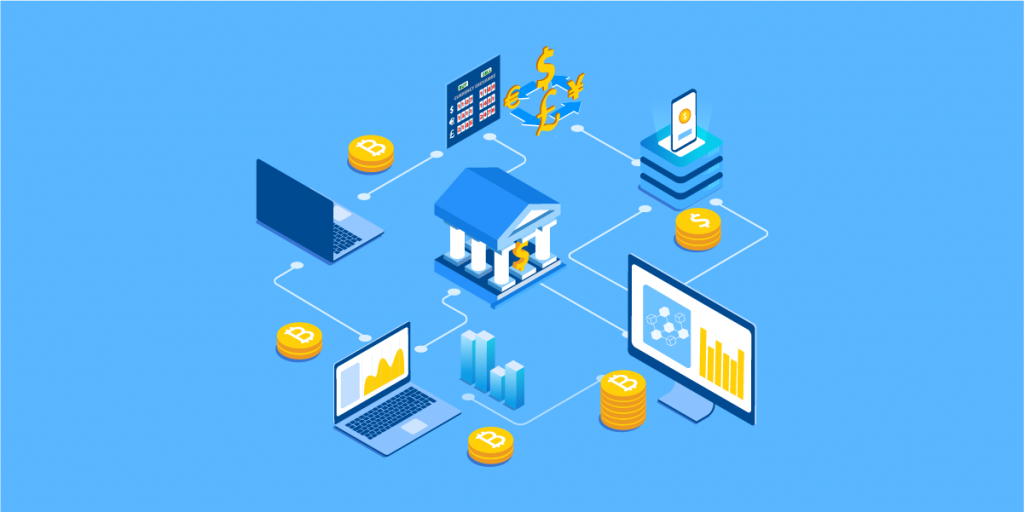
You could then put the USDC into Balancer and now you’re leveraged because you still have the ETH locked up in Compound. Now, let’s say in Balancer you get another token so that you’re double leveraged. Now you take this token and maybe you even return to Compound with it to get crazy leverage.
In this scenario, when COMP and Balancer are maintaining value, you can make a lot of money. But, since you’re highly leveraged, you can also lose a lot.
This kind of thing is happening right now and the total value locked into Compound is rocketing skyward because of all this farming. In previous times, farming was mostly done with stablecoins, but now you see more people moving into cryptocurrencies like BAT.
Risks of Leverage
To take a loan in BAT you need to pay 30% annual interest. Who in their right mind would take a loan at 30%? Well, it can work because the price of the COMP token has been rising with all the people FOMOing into it. If you get 120% interest in COMP tokens, then subtract 30% of your BAT interest from the COMP gains, your result is a whopping 90% APR. Not too shabby!
However, what happens when BAT starts to rise in price? Presently it’s not a problem because users can cover it with their COMP gains. But if BAT goes up and COMP goes down you can find yourself overextended.

Remember MakerDAO’s Black Thursday when the price of ETH collapsed? Many users got liquidated because the drop was so sudden they didn’t have time to cover their positions. Liquidation bots were swarming undercollateralized accounts like sharks on chum. What happens if we get another Black Thursday event? Even Vitalik has expressed concern over this possibility.
This kind of farming could lead to a one-way ticket to Rekt City. One minute, an over-extended millennial could be flipping off their parents with the dismissive, “Okay Boomer…” blaming them for ruining the planet and bragging about the new flat they’ll be buying with their Yield Farming gains. And the next minute, when COMP tanks, they could be groveling to move back into the basement. At which point, the parents will say something like, “I’d rather be a Boomer than one who lives in the basement of a Boomer.” Or the classic, “We’ll stop ruining the planet when you stop ruining our basement…” But enough stoking the flames of all this generational conflict.
The point is, you don’t want to go to Rekt City. It’s far from pleasing, so exercise caution.
More Risks Associated with Compound
Besides Yield Farming, is Compound safe?

Yield Farming
Many find Compound Finance to be a trusted protocol for lending and borrowing. Their code is publicly verifiable, and bug bounties are offered to security professionals for reporting vulnerabilities. Thus far, Compound’s smart contracts have not been breached by hackers. But there are always risks to be considered:
- The place you store your assets can get hacked.
This can happen when storing any crypto on an exchange or a wallet. You can learn how to protect your crypto assets in this article.
- Your position can get liquidated.
As discussed before, to maximize yield, users are over-leveraging making it much easier to get liquidated.
- Transferring cTokens
Be careful when transferring any of these tokens because when you do, you’re also transferring the balance of the underlying asset which can rapidly decline if you’re not paying attention.
- The interconnected DeFi system
In the MakerDAO Black Thursday event, the drop in the price of ETH caused massive liquidation. With all this Yield Farming going on, token prices are more connected than ever before. A rapid shift in the price of one asset can lead to failures in other markets that would otherwise seem like unrelated events.
It’s impossible to make gains without some risk, that’s why we’re all in this game. Just remember that the higher the potential return in any trading opportunity, the higher the risk. There’s no way to manage 100% of your risk, but there are insurance providers like Nexus Mutual and Opyn coming on board that are worth looking into.
Will Compound Continue to be the DeFi Darling?
Compound has always been second to MakerDAO in the DeFi space. And even though the value locked in the protocol is still behind Maker, frenzied speculation over COMP tokens has given the project “a fully diluted, implied market capitalization of nearly $785 million, well above Maker’s $546.2 million,” according to DeFi Market Cap.
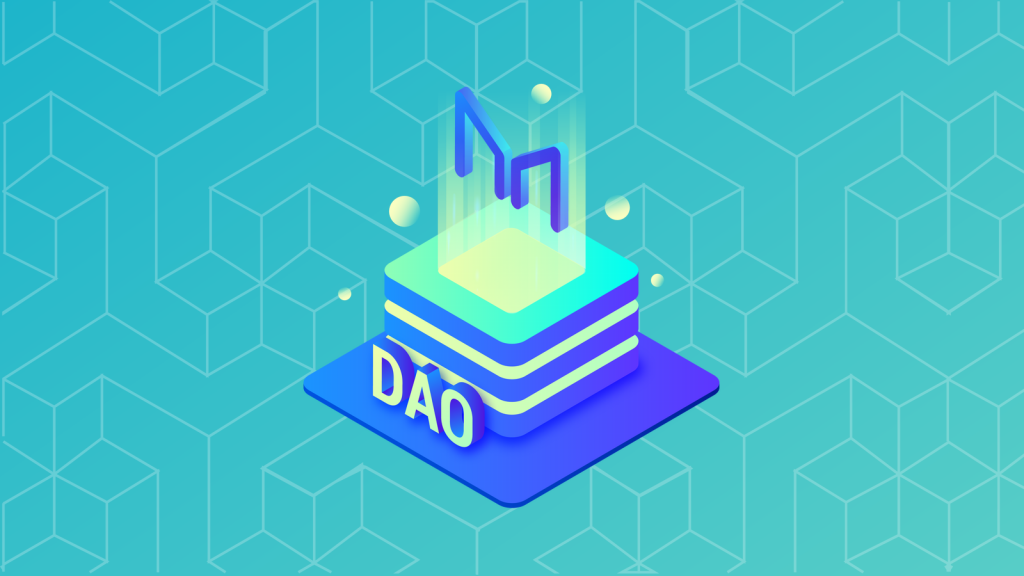
Compound has taken the DeFi space by storm and Coinbase Pro even announced that it will list COMP. A market in COMP tokens has sprung up on Uniswap and the crypto exchange FTX also plans on listing it.
Compound is posing a challenge to Maker’s dominance, but some worry that COMP tokens might just be caught up in a speculative cycle, and the outsized market cap relative to total value locked in the protocol might actually be a harbinger that the rally is already overextended.
If COMP’s market value grows too far beyond its intrinsic value then a pullback is certain to follow. And if that happens, any over-extended Yield Farmers will see their crops quickly devoured by a plague of liquidating locusts sending them to guess where? That’s right, Rekt City.
There’s always plenty of room in Rekt City for the reckless trader, nevertheless, there is also money to be made that may be worth a certain level of risk. Check their site for a list of exciting projects integrating Compound and cTokens.
To further your education check out the courses on Compound, MakerDAO, and DeFi at Ivan On Tech Academy, the go-to platform for blockchain education. Take a look today!
Author: MindFrac
